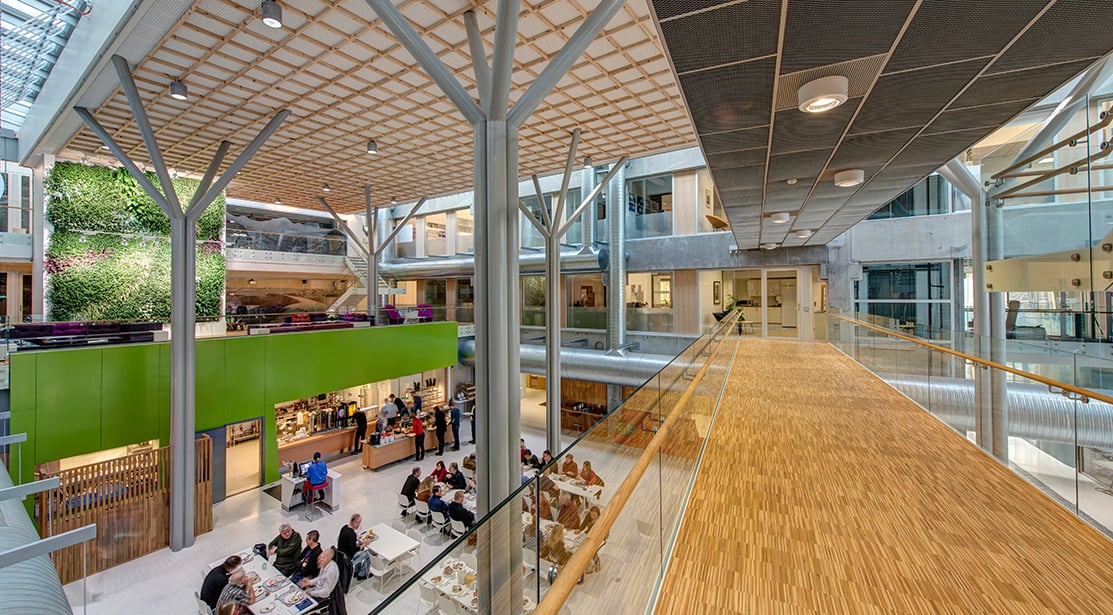Office corridors are not only traffic zones – they can also serve as creative working areas where people can relax, exchange ideas, work in teams or even meet with clients. Lighting in communal areas may be used to emphasise different zones within those areas, but it must not dazzle those working inside adjacent rooms. Corner-mounted LED lights for corridors provide glare-free, asymmetrical light to the walls and ceiling. Indirect light makes corridors seem bigger and more inviting. A mix of direct and indirect light offers appropriate lighting conditions for conversation zones.
Casting more light onto walls, ceilings and people’s faces created better conditions for visual communication. Wall illuminances in circulation areas should reach values of at least 50 lux, whereas the ceiling should have at least 30 lux. Higher illumination levels should be considered in sitting groups and communication zones, and the cylindrical illuminance and the light’s modelling effect should also be considered.
Lighting requirements:
| Type of task / activity area |
Lux-level (Em) |
Glare rating (UGRL) |
Uniformity (U0) |
Colour rendition (Ra) |
Em,z | Em,wall | Em,ceiling | Specific requirements |
|
| required | modified | U0 ≥ 0,10 | |||||||
| Circulation areas and corridors | 100 | 150 | 28 | 0,40 | 40 | 50 | 50 | 30 | Illuminance at floor level. Wall illuminances: min 50 lux Ceiling illuminance min 30 lux. Cylindrical illuminance: min 50 lux. |
| Stairs, escalators, travolators | 100 | 150 | 25 | 0,40 | 40 | 50 | 50 | 30 | Illuminance at floor level. Requires enhanced contrast on leading edge of the steps. |
| Elevators, lifts | 100 | 150 | 25 | 0,40 | 40 | 50 | 50 | 30 | Illuminance at floor level. Light in front of elevator |
